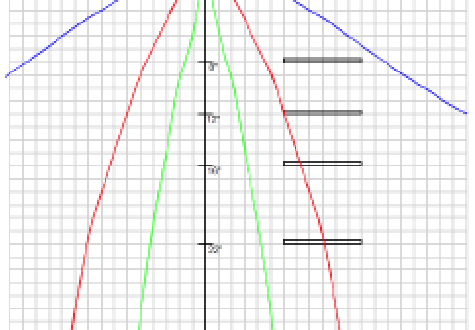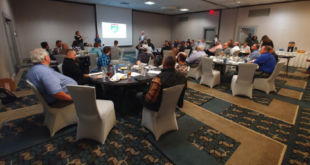
ESFR Sprinklers and Obstructions
Research Continues on Larger Sizes
The invent of early suppression fast response (ESFR) sprinkler in the 1980s revolutionized storage fire protection. No longer were rack sprinklers needed to protect high heat release rate commodities stored within tall racks. In addition, the ESFR sprinkler provides adequate protection for a range of commodities, a vital characteristic given the fluid nature of modern warehouses. ESFR sprinkler design is also a giant leap forward in sprinkler technology. Prior sprinkler design relied upon density/area criteria derived from a limited number of fire tests with no quantifiable performance objective. ESFR sprinkler design, on the other hand, has a scientifically based performance objective.
The application of this new technology was met with a degree of caution and conservatism. One such example is the current obstruction rules found in the National Fire Protection Association’s (NFPA) standard, NFPA 13, Standard for the Installation of Sprinklers. While these rules have stood the test of time, many believed they could be overly conservative. This issue is further complicated because there is no fire test data available in public domain to substantiate the requirements.
Fortunately, along came the Fire Protection Research Foundation (FPRF), a division of NFPA, to the rescue. The FPRF, along with a consortium of stake holders, organized a multi-year research project to obtain answers to the ESFR obstruction issue. Scott A. Futrell’s article in the previous edition of Sprinkler Age provided an in-depth look at the research completed to date. This article focuses on the path forward as we begin to plan for the fourth, and likely final phase of the project. Additionally, an overview of the concepts derived from the initial work is provided.
The project goal is to ultimately develop a tool that could be used to provide the reliable analysis of the impact of obstructions on ESFR sprinkler performance. To achieve this goal, Phases 1-3 focused on developing an understanding of the effect various obstruction scenarios have on ESFR sprinkler performance. Eight full-scale and approximately 40 Actual Delivered Density (ADD) tests have been completed to date.
The initial focus was to understand the effect of bar joist and bridging member location on the performance of ESFR sprinklers. From survey work, coordination of bridging members was identified as the most problematic obstruction issue. The testing results showed that a bar joist 22 to 36 inches in depth located 6 inches horizontally from the sprinkler did not decrease the ESFR sprinkler performance to an unacceptable level. Also, that bridging members 1½ x 1½ inches in size located 12 inches below and directly under a sprinkler did not did not decrease the ESFR sprinkler performance to an unacceptable level. The testing of both bar joist and bridging members concurrently also provided acceptable results. This data will be used as the substantiation for a proposed revision to the 2019 edition of NFPA 13.
The effect miscellaneous obstructions have on ESFR sprinkler performance was the next issue explored. Various arrangements of obstruction widths and shapes were tested to measure the change in ADD from the baseline condition (unobstructed sprinkler). The obstructions ranged in width from 3 to 12 inches. Both round and flat shapes were used. To better understand the results of the ADD work, the obstruction scenarios were plotted against ESFR sprinkler discharge patterns. (See Figure 1.) This analysis showed that for obstructions located directly below the sprinkler the ADD decreases as the vertical distance between the sprinkler and the obstruction decreases. For obstructions horizontally offset from the sprinkler, the inverse is true. The ADD decreases as the vertically distance between the sprinkler and the obstruction increases.

Various obstruction scenarios were tested in full scale based upon the information gathered in the ADD testing and sprinkler discharge pattern analysis. From this work, it is hypothesized that although ADD testing may be used to gain insight into full-scale fire test performance, other variables are involved. For example, two flat obstructions, 6 and 12 inches wide, located 6 inches horizontally from the sprinkler and 20 inches below have very similar ADD testing results. One might even suggest that the ADD for the 6-in.-wide obstruction is worst. However, when both scenarios were tested in full scale, only one sprinkler activated in the 6-in.-wide obstruction test and 10 sprinklers activated in the 12-in.-wide obstruction test. The test results of the 12-in.-wide obstruction showed at least three sprinklers skipped (did not operate). One explanation is that the larger width of the 12-in.-wide obstruction caused a larger disruption of sprinkler droplets and thus allowed the fire plume to transport the droplets to adjacent sprinklers, cooling the sprinkler such that operation did not occur. Without examination of this variable, the understanding of the effect miscellaneous obstructions has on ESFR sprinkler performance will be limited.
For the final phase, additional ADD and full-scale tests will be conducted. These tests will be used to fill in data gaps for 12-in.-wide obstructions, where only two points were tested, 16 and 20 inches below the sprinkler. Additionally, using the ADD testing to predict sprinkler skipping will be researched. It is thought that visual observation or other methods may allow the use of ADD testing to provide an indication of the potential for sprinkler skipping. The findings of the ADD testing will then be verified in full scale. The magnitude of this testing effort is projected to be 20-30 ADD tests and three to five full-scale tests.
The findings of this research effort will be used as the substantiation for proposed revisions to NFPA 13. The first proposed revision will include the reduction of the present horizontal separation of bar joist to ESFR sprinkler from 12 inches to 6 inches. Also, the location of the bridging members, and similarly sized obstructions, (11/2 x 11/2 inches in size) from 24 inches to 12 inches below the sprinkler. More revisions are anticipated based upon the findings of Phase 4 of the project.
Regarding the development of the tool discussed in the project objective, much thought has been given to this concept. Given this is a three-dimensional problem, the presentation of the tool in a two-dimensional format, such as in a hard copy version of NFPA 13, is challenging. However, it is thought a diagram showing various zones within which will be obstruction restrictions can be created. More work on this concept is underway now.
REFERENCES:
1. Kung, H.C., Numerous publications: Actual Delivered Density > Required Delivered Density = Fire Suppression.
2. Palenske and Fletcher. “Obstructions and ESFR Sprinklers – Phase 3 “Fire Protection Research Foundation Report, December 9, 2016, Fig. 3, Pg. 5.
EDITOR’S NOTE: A related article on smaller obstructions appeared in the March/April 2017 issue of Sprinkler Age, page 10.
 ABOUT THE AUTHOR: Garner A. Palenske, P.E. is vice president of Jensen Hughes in San Diego, California. He has over 30 years’ experience in a broad range of fire protection engineering disciplines, including fire research, sprinkler design, and code consulting. Palenske is also a member of the NFPA 13 committee.
ABOUT THE AUTHOR: Garner A. Palenske, P.E. is vice president of Jensen Hughes in San Diego, California. He has over 30 years’ experience in a broad range of fire protection engineering disciplines, including fire research, sprinkler design, and code consulting. Palenske is also a member of the NFPA 13 committee.

 Sprinkler Age A Publication of the American Fire Sprinkler Association
Sprinkler Age A Publication of the American Fire Sprinkler Association
